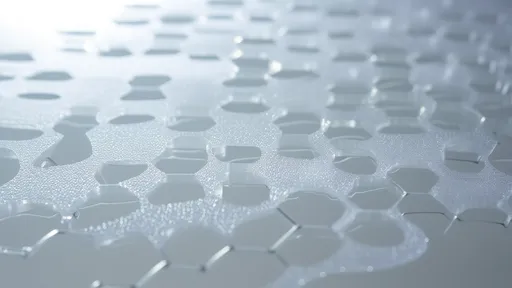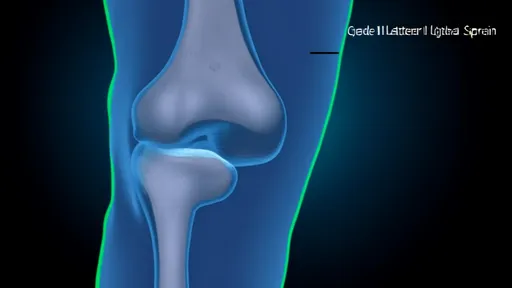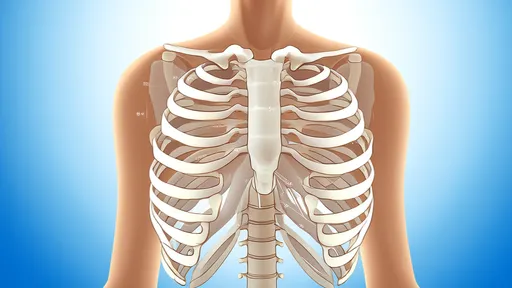In today's fast-paced world where stress has become an inevitable part of daily life, people are constantly seeking unconventional yet effective methods to alleviate tension. One such surprising but increasingly popular technique involves the use of ordinary bubble wrap - that ubiquitous packaging material that most of us instinctively pop when it comes our way. What began as an unconscious fidgeting behavior has evolved into structured stress relief training programs harnessing the therapeutic potential of this simple material.
The concept of bubble wrap as a stress-relief tool gained serious attention when psychologists observed the almost universal tendency for people to pop the bubbles when given the chance. This seemingly mindless activity actually triggers several psychological and physiological responses that contribute to stress reduction. The satisfying pop sound creates instant auditory feedback, while the tactile sensation engages multiple senses, creating a mindful experience that temporarily distracts from stressors.
Corporate environments have been particularly quick to adopt bubble wrap stress relief techniques. Forward-thinking HR departments now incorporate bubble wrap breaks into employee wellness programs, recognizing that short, structured popping sessions can significantly improve focus and productivity. These sessions typically last 3-5 minutes and are scheduled between long meetings or intensive work periods. Employees report feeling noticeably refreshed after these brief interventions, with many describing the experience as "a mini mental reset."
Beyond casual popping, structured bubble wrap therapy sessions have emerged in various therapeutic settings. Occupational therapists use specialized popping patterns to help patients with anxiety disorders or those recovering from traumatic experiences. The rhythmic nature of popping bubbles in sequence creates a meditative state, while the physical action helps release muscle tension. Some practitioners have developed color-coded bubble wrap sheets where different colors indicate different popping sequences, adding a cognitive element to the physical activity.
The science behind why bubble wrap popping works as a stress reliever is fascinating. Neurological studies suggest that the action triggers the release of endorphins - the body's natural feel-good chemicals. The combination of tactile stimulation, auditory feedback, and visual confirmation (seeing bubbles flatten) creates a multisensory experience that briefly overrides stress pathways in the brain. Furthermore, the immediate cause-and-effect nature of popping (press and pop) gives users a sense of control and accomplishment, however small, which counters feelings of helplessness that often accompany stress.
Innovations in bubble wrap design have expanded its therapeutic applications. Manufacturers now produce specialty bubble wrap with varying bubble sizes to create different sensory experiences. Larger bubbles provide more dramatic pops that some find more satisfying, while smaller bubbles offer quicker, more frequent feedback. Some versions even incorporate aromatic microcapsules that release calming scents like lavender when popped, adding aromatherapy to the experience. These developments have transformed simple bubble wrap from packaging material to a legitimate therapeutic tool.
Educational institutions have begun implementing bubble wrap stress techniques during exam periods. Many university health centers now provide free bubble wrap sheets during finals week, recognizing that students benefit from quick stress outlets between study sessions. Some progressive elementary schools use bubble wrap activities to help children develop fine motor skills while simultaneously teaching them simple stress management techniques. Teachers report that short bubble wrap breaks help restless students refocus while providing sensory stimulation that some children particularly need.
The environmental aspect of bubble wrap stress relief deserves mention. While traditional plastic bubble wrap remains popular, eco-conscious versions made from biodegradable materials are gaining traction. Some companies specialize in recycling used bubble wrap for stress relief purposes, creating a sustainable loop where packaging material gets a second life as a therapeutic tool before final recycling. This green approach makes the practice more appealing to environmentally sensitive users and organizations.
Surprisingly, competitive bubble wrap popping has emerged as a lighthearted stress-relief sport. Organized events feature timed popping challenges where participants race to pop entire sheets as quickly as possible. These gatherings serve as both stress relief and social bonding experiences, with participants often reporting laughter and camaraderie as additional benefits. While not exactly an Olympic sport, these competitions highlight how a simple activity can transform into a community-building exercise.
For those looking to incorporate bubble wrap stress relief into their daily routine, experts recommend starting with short, focused sessions rather than mindless popping throughout the day. The key is to be fully present during the activity - noticing the sensations, sounds, and rhythm - to maximize its mindfulness benefits. Many find it helpful to establish a specific stress trigger (like feeling overwhelmed) that signals time for a brief bubble wrap break. With practice, this becomes an effective conditioned response to stress.
As research continues into unconventional stress management techniques, bubble wrap therapy stands out for its simplicity, accessibility, and immediate gratification. In a world where high-tech solutions often dominate the wellness industry, there's something refreshing about the effectiveness of this low-tech approach. Whether used casually or as part of structured stress relief training, bubble wrap popping proves that sometimes the simplest solutions can be surprisingly powerful tools for mental wellbeing.
The world of fitness is constantly evolving, with new trends emerging from every corner of the globe. While some workouts stand the test of time, others are so peculiar they make you wonder - who thought this was a good idea? From goat yoga to face slapping workouts, humanity's quest for better health has spawned some truly unconventional practices that blur the line between genius and madness.
The fitness world is buzzing with excitement over the latest viral workout trend—Divine Beats Training 2.0. This high-energy program combines pulsating electronic dance music with scientifically optimized movement patterns, creating what enthusiasts call "the first workout that feels like a nightclub experience." Unlike traditional exercise routines, this system uses precisely timed musical drops and bass-heavy beats to trigger explosive physical responses from participants.
In an era where office workers spend increasingly long hours tethered to their desks, a peculiar fitness trend has emerged from Japan that turns mundane stationery into tools for wellness. The "Stationery Workout" movement, particularly its signature "Ruler Balance" technique, has gained surprising traction among white-collar professionals seeking discreet ways to stay active during marathon work sessions. This unconventional approach transforms everyday office supplies into instruments of physical conditioning, blending productivity with subtle exercise.
In the age of social media dominance, fitness influencers have created countless viral workout trends that promise quick results. However, many of these popular movements can cause serious injuries when performed incorrectly or excessively. Medical professionals and physical therapists are increasingly warning about the dangers lurking behind some deceptively simple-looking challenges.
Fitness gaming has taken the world by storm, and Nintendo's Ring Fit Adventure stands out as one of the most innovative entries in this genre. While many players enjoy the game at face value, there's a hidden layer of depth that few explore—the secret intensity settings. These undisclosed options can transform your workout, pushing you beyond the default limits. For those seeking a more challenging experience, unlocking these hidden features can be a game-changer.
The world of pet entertainment has taken a thrilling turn with the rise of obstacle course designs tailored specifically for feline athletes. Cat owners and enthusiasts are increasingly embracing the concept of creating dynamic, engaging, and challenging courses that cater to their pets' natural instincts. These obstacle courses, often referred to as "cat obstacle course" in certain communities, blend creativity with functionality to provide cats with both physical exercise and mental stimulation.
In today's fast-paced world where stress has become an inevitable part of daily life, people are constantly seeking unconventional yet effective methods to alleviate tension. One such surprising but increasingly popular technique involves the use of ordinary bubble wrap - that ubiquitous packaging material that most of us instinctively pop when it comes our way. What began as an unconscious fidgeting behavior has evolved into structured stress relief training programs harnessing the therapeutic potential of this simple material.
The ancient Chinese literary masterpiece Dream of the Red Chamber is not merely a tale of aristocratic decline—it is also a treasure trove of traditional wellness practices. Among its pages lie subtle references to health-preserving exercises, many of which were practiced by the elite women of the Jia household. Today, these centuries-old movements are being reinterpreted through a modern lens, offering urban dwellers an unexpected bridge between classical literature and contemporary self-care.
The growing popularity of energy drinks has sparked significant interest in their physiological effects, particularly on cardiovascular health. Recent studies utilizing electrocardiogram (ECG) monitoring have begun to unravel the complex relationship between these caffeine-laden beverages and heart function. As millions worldwide consume energy drinks for a quick boost, researchers are investigating whether these products may trigger subtle yet meaningful changes in cardiac rhythm.
Walking is often touted as one of the simplest and most effective forms of exercise, accessible to almost everyone regardless of fitness level. However, as the trend of hitting extreme step counts—such as 30,000 steps a day—gains popularity, concerns about joint wear and tear have emerged. While moderate walking is beneficial, pushing the body to such extremes may come at a cost, particularly for the knees, hips, and ankles. This raises an important question: how much is too much when it comes to daily steps?
The crisp morning air, the quiet streets, and the promise of a fresh start make dawn an irresistible time for runners. Yet beneath the serenity of sunrise jogs lies a hidden danger few anticipate – exercise-induced syncope, particularly when running in a fasted state. This phenomenon isn’t merely about "feeling lightheaded"; it’s a temporary loss of consciousness that can lead to catastrophic falls or accidents. As more people adopt fasting routines or squeeze workouts before breakfast, understanding why this happens and how to respond could mean the difference between a close call and a tragedy.
Ligamentous laxity caused by overstretching is a complex clinical condition that often requires advanced imaging for accurate diagnosis. Magnetic resonance imaging (MRI) has emerged as the gold standard for evaluating ligament integrity, providing unparalleled soft tissue contrast that allows clinicians to assess the degree of ligament injury and subsequent laxity. This imaging modality reveals not only the macroscopic tears but also subtle microstructural changes that occur when ligaments are stretched beyond their physiological limits.
For decades, the idea of converting fat into muscle—or vice versa—has been a topic of fascination in fitness and medical communities. While the concept is often oversimplified in popular media, the biological mechanisms behind this transformation are complex and deeply rooted in cellular metabolism. Understanding how the body regulates the interplay between adipose tissue and muscle mass requires delving into the biochemical pathways that govern energy storage and utilization.
The medical community has long grappled with the complexities of localized cryogenic burns, a unique injury pattern that occurs when skin and underlying tissues are exposed to extreme cold. Unlike thermal burns which follow more predictable pathways, cryogenic injuries present distinct clinical challenges due to their delayed presentation and progressive tissue damage. Recent multicenter studies have shed new light on the pathophysiology and optimal treatment approaches for these frostbite-like injuries caused by industrial accidents, medical cryotherapy mishaps, and improper handling of liquefied gases.
The medical community has long been fascinated by the intricate relationship between skeletal deformities and their underlying causes. Among these, costal arch deformities, particularly those involving the lower ribs, present a unique challenge for both diagnosis and treatment. Often referred to as "corset rib syndrome" or "lower rib cage deformity," this condition manifests as an abnormal inward curvature of the lower ribs, frequently accompanied by chronic pain and respiratory limitations. The condition's nomenclature stems from its historical association with tight-lacing corsets, though modern cases often arise from congenital factors or trauma.














